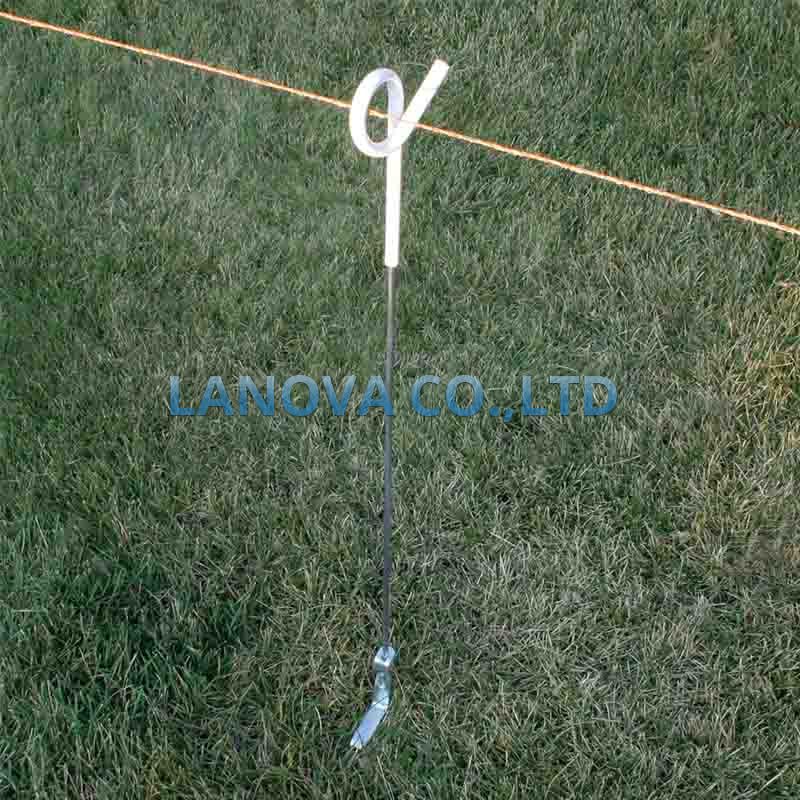Your Position: Home - Minerals & Metallurgy - Empowering Agriculture: The Electric Fence System's Impact on Livestock Management
In the dynamic arena of agriculture, where innovation intersects with age-old practices, the electric fence system has emerged as a revolutionary tool, transforming livestock management and safeguarding farm assets. By harnessing the principles of electricity, this modern fencing solution brings unparalleled advantages, offering enhanced security, efficiency, and sustainability. This article delves into the intricacies of the electric fence system, exploring its features, benefits, and diverse applications within the agricultural landscape.
Decoding the Electric Fence System
At its core, the electric fence system reimagines the conventional notion of fencing by incorporating controlled electric pulses into the barrier design. The fundamental premise is to deliver a mild, non-lethal shock to any creature that comes into contact with the electrified wires, creating a psychological deterrent that effectively prevents livestock from straying beyond the designated boundaries. This technology-driven approach has revolutionized the way farmers manage their livestock and protect their land.
Essential Components and Their Roles
Energizer (Fence Charger): The energizer is the nucleus of the electric fence system. It generates periodic pulses of electric current, transforming standard fencing wires into charged deterrents. Energizers are available in various configurations, including mains, battery-operated, and solar-powered options, offering flexibility for diverse settings.
Fencing Wires: High-tensile wires, responsible for carrying the electric charge, compose the physical framework of the electric fence These wires are strategically placed and connected to the energizer, forming a fortified perimeter that livestock learn to respect.

Insulators: Insulators, typically crafted from non-conductive materials such as plastic or ceramic, prevent the electric charge from dissipating into the ground. These critical components ensure the efficiency of the system by maintaining a controlled flow of electricity.
Grounding System: A well-established grounding system is vital for the proper functioning of the electric fence. Grounding rods are driven into the earth and connected to the energizer, enabling the completion of the electrical circuit. This grounding ensures that the electric charge returns to the energizer through a closed loop.
Advantages and Transformative Impact
Enhanced Security: The electric fence system is renowned for its effectiveness in containing livestock. The mild shock serves as a memorable deterrent, encouraging animals to stay within the defined boundaries. This feature contributes significantly to preventing escapes and minimizing potential losses.
Cost-Efficiency: Electric fences often prove to be more cost-effective than traditional fencing options. They require fewer materials, less labor, and minimal ongoing maintenance. The reduced need for physical infrastructure makes them an economically viable choice.
Adaptability: Electric fence systems can be tailored to suit the specific needs of various livestock species and farm layouts. The system's versatility accommodates different shock levels, ensuring the safety of animals while maintaining containment.
Environmental Sustainability: With solar-powered energizers available, electric fence systems embrace sustainable practices by relying on renewable energy sources. This contributes to reducing the farm's carbon footprint and aligning with modern environmental standards.
Reduced Land Impact: Electric fences occupy less space compared to traditional fences, allowing farmers to utilize their land more efficiently. This is particularly beneficial in scenarios where every inch of space matters.
Ease of Installation and Maintenance: The installation of electric fence systems is relatively straightforward, and their maintenance requirements are minimal. Regular checks and basic upkeep are usually sufficient to ensure optimal performance.
Applications Across Agriculture
Livestock Containment: Electric fences are the cornerstone of livestock containment strategies, keeping animals safe, preventing intermingling, and reducing the risk of accidents.
Predator Control: Farmers utilize electric fences to deter predators from accessing their livestock, thus safeguarding their valuable herds.
Wildlife Conservation: In conservation efforts, electric fences help establish protective barriers to keep wildlife away from cultivated areas, thereby minimizing human-wildlife conflicts.
Boundary Definition: Electric fences efficiently delineate property boundaries, helping farmers avoid disputes and clearly demarcating their land.
Conclusion
The electric fence system epitomizes the convergence of innovation and practicality in modern agriculture. By seamlessly integrating electricity into livestock management, this technology has redefined how farmers secure their assets and streamline their operations. Through its notable advantages in security, cost-efficiency, adaptability, and sustainability, the electric fence system emerges as a catalyst for agricultural advancement, empowering farmers to navigate the challenges of the modern era with confidence and resilience.
179
0
0
Comments
All Comments (0)